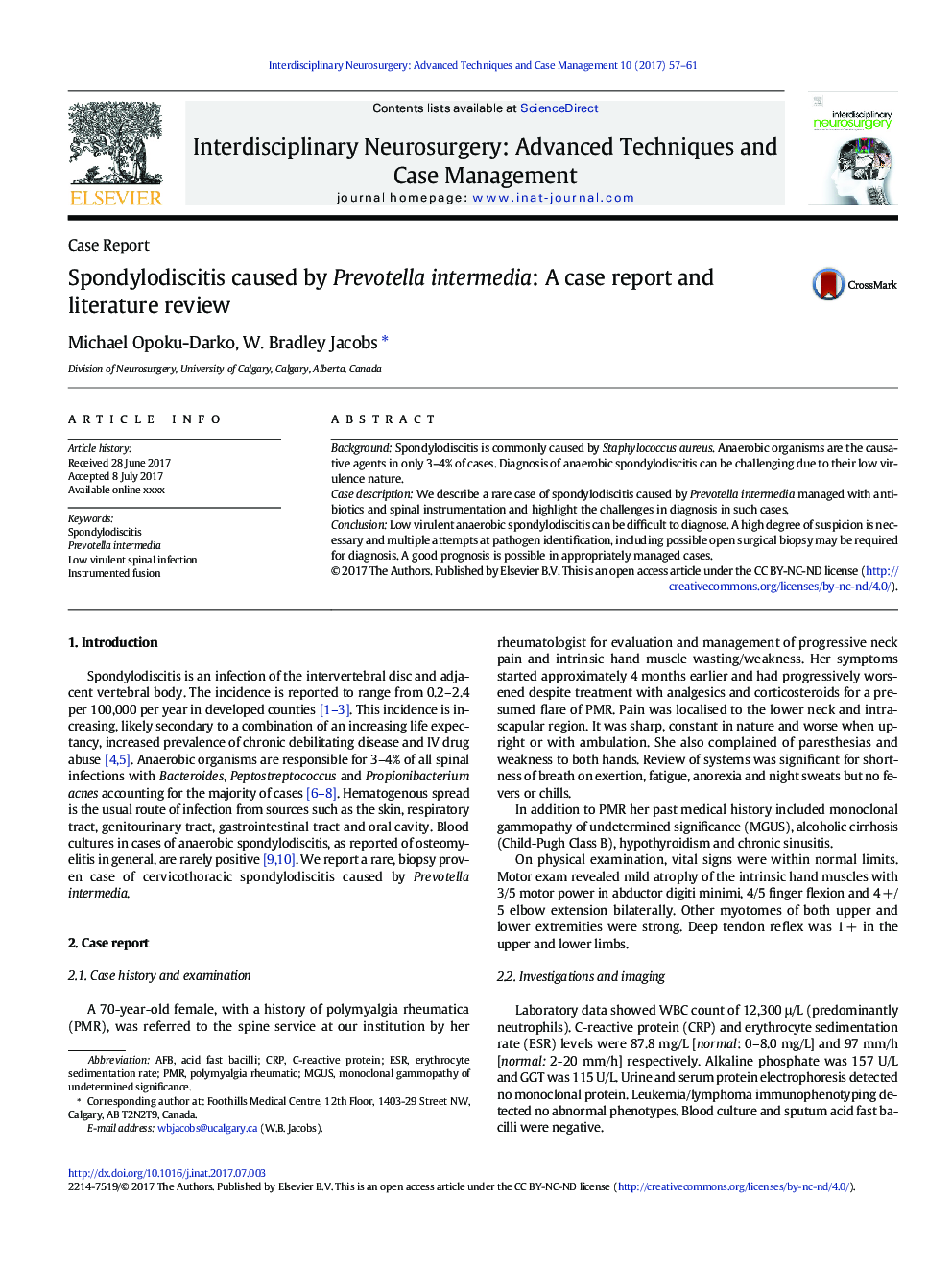| Article ID | Journal | Published Year | Pages | File Type |
|---|---|---|---|---|
| 5629395 | Interdisciplinary Neurosurgery | 2017 | 5 Pages |
â¢Low virulent organisms such as Prevotella intermedia are a potential cause of spondylodiscitis.â¢Biopsy may be key to establishing a diagnosis.â¢Prompt diagnosis and treatment with antimicrobials and/or instrumentation where there is instability result in good outcome.
BackgroundSpondylodiscitis is commonly caused by Staphylococcus aureus. Anaerobic organisms are the causative agents in only 3-4% of cases. Diagnosis of anaerobic spondylodiscitis can be challenging due to their low virulence nature.Case descriptionWe describe a rare case of spondylodiscitis caused by Prevotella intermedia managed with antibiotics and spinal instrumentation and highlight the challenges in diagnosis in such cases.ConclusionLow virulent anaerobic spondylodiscitis can be difficult to diagnose. A high degree of suspicion is necessary and multiple attempts at pathogen identification, including possible open surgical biopsy may be required for diagnosis. A good prognosis is possible in appropriately managed cases.
